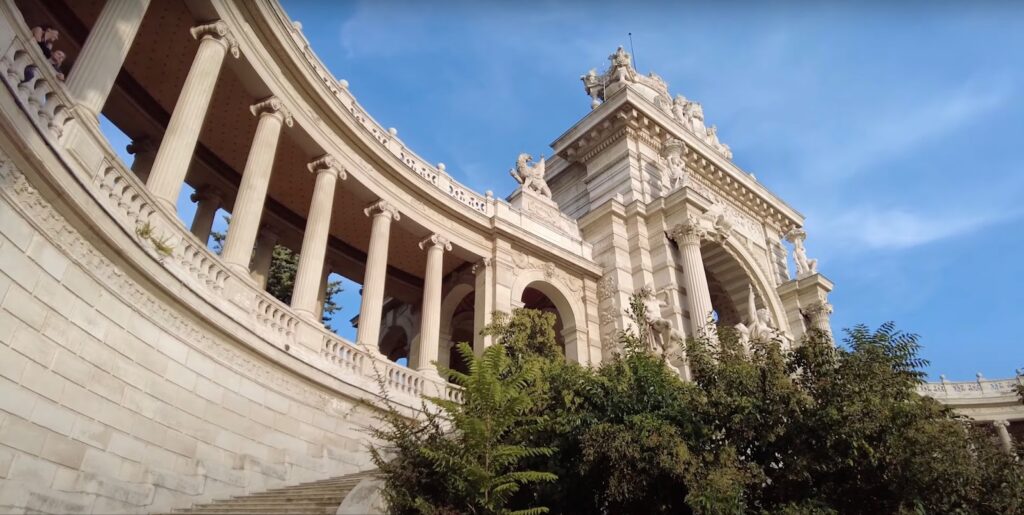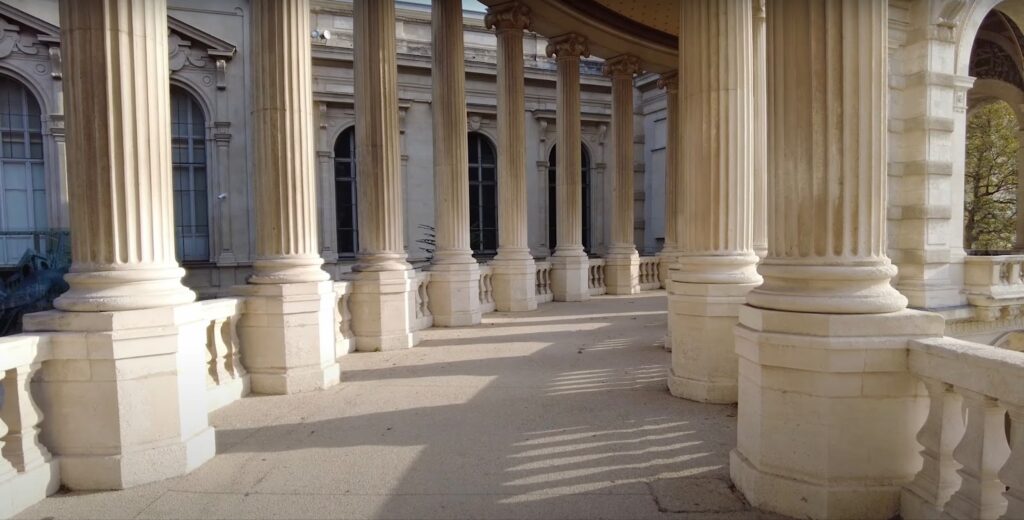The Longchamp Palace is a stunning architectural masterpiece located in Marseille, France. It is a symbol of grandeur and elegance, and has been a prominent landmark in the city since its construction in the 19th century. The palace complex is made up of two main buildings – the Palais de Longchamp and the Musée des Beaux-Arts de Marseille (Museum of Fine Arts). It also includes beautiful gardens, fountains, and sculptures that add to its charm and beauty.
If you are planning to visit Marseille, the Longchamp Palace should definitely be on your itinerary. Whether you are a history buff, an art lover, or simply someone who appreciates stunning architecture, this palace has something for everyone. In this article, we will delve into the fascinating history of the Longchamp Palace and explore the various elements that make it a must-visit destination.
The History and Construction of the Longchamp Palace
The Inspiration Behind the Palace’s Creation
The Longchamp Palace was built in the mid-19th century as a celebration of the Canal de Marseille’s completion, which brought fresh water to the city after years of drought. The canal project was spearheaded by Emperor Napoleon III, who wanted to improve the living conditions of the people of Marseille. The emperor commissioned architects Henry Espérandieu and Henri-Jacques Espérandieu to design and build the palace as a tribute to the canal and its significance to the city.
The Construction Process
Construction of the palace began in 1862 and was completed in 1869. The building materials used were mainly stone from neighboring quarries and marble from Italy. The palace was constructed in a Neo-Classical style, which was popular during that time period. The architects drew inspiration from ancient Greek and Roman architecture, incorporating grand columns, arches, and domes into the design.
The Significance of the Palace in Marseille’s History
The completion of the Longchamp Palace was a significant event for both Marseille and France as a whole. It not only provided a source of fresh water for the city but also showcased the technological advancements of the time. The palace’s sheer size and grandeur made it a symbol of power and prosperity for Marseille, which was once a major port in the Mediterranean. Today, it stands as a reminder of the city’s rich history and serves as a popular tourist destination.

Exploring the Palais de Longchamp
The Grand Portico and Its Symbolism
As you enter the Palais de Longchamp, you will be greeted by a magnificent portico that spans over 115 meters long and 50 meters high. The portico is adorned with intricate carvings and sculptures that depict various figures from Greek mythology, such as Apollo, Athena, and Poseidon. These figures symbolize the importance of water and its role in civilization.
The Grand Staircase and Its Design
Upon entering the palace, visitors are met with a grand staircase that leads to the Musée des Beaux-Arts de Marseille. The staircase is made up of 32 marble steps and is lined with statues representing the major rivers and canals of France. At the top of the stairs, visitors are greeted by a magnificent fountain depicting the Chariot of Apollo, which is the centerpiece of the courtyard.
The Musée des Beaux-Arts de Marseille
The Musée des Beaux-Arts de Marseille (Museum of Fine Arts) is located in the east wing of the palace. It houses an extensive collection of art and artifacts dating back to the 16th century, including paintings, sculptures, and decorative arts. The museum also regularly hosts temporary exhibitions, making it a must-visit destination for art enthusiasts.
Discovering the Gardens of the Longchamp Palace
The Jardin du Roy René
The Jardin du Roy René (King René’s Garden) is located on the west side of the palace and is named after King René of Anjou, who was known for his love of flora and fauna. The garden boasts a beautiful collection of plants and flowers, as well as a large pond with a fountain. It is a peaceful and serene oasis in the heart of the city.
The Jardin des Vestiges
The Jardin des Vestiges (Garden of Ruins) is situated at the back of the palace and is home to the remains of the ancient Roman aqueduct that once supplied Marseille with water. Visitors can explore the ruins and learn about the history of the city’s water supply while enjoying the beautiful greenery and fountains.
The Parc Longchamp
The Parc Longchamp is a vast open space that connects the Palais de Longchamp and the Musée des Beaux-Arts de Marseille. It features beautiful paths lined with trees, shrubs, and flower beds, making it an ideal spot for a leisurely stroll or a picnic. The park also has a playground, making it a popular destination for families with children.

The Fountains and Statues of the Longchamp Palace
The Chariot of Apollo Fountain
The Chariot of Apollo Fountain is the centerpiece of the courtyard of the Palais de Longchamp. It depicts the Greek god Apollo riding a chariot pulled by four horses, symbolizing the sun god’s journey across the sky. The fountain is a stunning example of neoclassical sculpture and is a popular spot for taking photos.
The Fountain of the Durance
The Fountain of the Durance is located in the Jardin du Roy René and is named after the river Durance, which flows through Marseille. The fountain depicts a group of nymphs bathing in the river, with a sculpture of King René looking on from a nearby pavilion. It is a beautiful and tranquil spot within the gardens.
The Four Seasons Statues
At the entrance of the Palais de Longchamp, visitors will find four statues representing the four seasons – Spring, Summer, Autumn, and Winter. These statues were added to the palace’s design in the early 20th century and are a tribute to the changing seasons and their role in agriculture and nature.
Conclusion
The Longchamp Palace is a magnificent testament to the city of Marseille’s rich history and culture. It is a must-visit destination for anyone who appreciates art, history, or architecture. The palace’s grandeur and elegance will surely leave you in awe, and its beautiful gardens, fountains, and statues provide the perfect backdrop for a day of exploration. So, when in Marseille, include the Longchamp Palace on your itinerary and conveniently reach it via the metro.